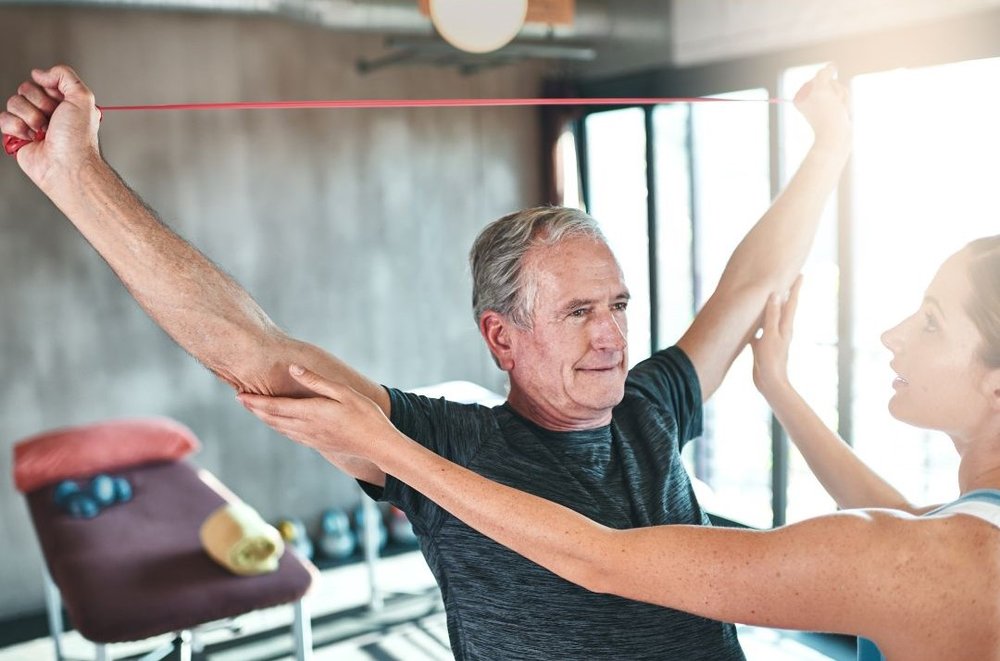Why Resistance Training Is Essential for Maintaining Muscle Strength as You Age
As we get older, maintaining muscle strength and mass becomes increasingly important for staying active, mobile, and independent. Many people assume that muscle loss only becomes a concern in their senior years, but in reality, muscle decline can begin as early as age 40.
This gradual loss of muscle, known as sarcopenia, can make everyday tasks like standing up, climbing stairs, shopping, or even walking more difficult. The good news is that regular resistance training can help slow, prevent, and even reverse these changes, keeping your muscles strong and your body capable at any age.
As we age, maintaining muscle mass and strength is crucial for staying active and independent. You might think muscle loss is something to worry about only in your later years, but changes actually start as early as age 40. This process, known as sarcopenia, can make daily activities like getting out of bed, shopping, and even walking more challenging. But here’s the good news: Resistance training can help combat these changes and keep your muscles strong, no matter your age.

Understanding Muscle Changes with Age
Your muscles are made up of different types of fibers, each serving a unique purpose.
- Type I muscle fibers support endurance activities such as walking or cycling.
- Type II muscle fibers are responsible for strength and power, the kind you use when lifting, carrying, or moving quickly.
As we age, Type II fibers naturally shrink and weaken faster than Type I fibers, leading to a noticeable decline in muscle strength and physical performance. This is why resistance training is key. It specifically targets and strengthens these power-producing fibers, helping you maintain strength, stability, and quality of life


The Power of Resistance Training
Recent research has shown that heavy resistance training can reverse some of these age-related muscle changes. A study involving individuals from different age groups found that regular, supervised resistance training sessions significantly improved muscle quality, even in older adults.
The Science Behind the Benefits
Resistance training stimulates muscle growth and strength by activating Type II fibres. This helps counteract the natural decline in muscle mass and strength that comes with age. Moreover, maintaining muscle health reduces the risk of injuries, improves mobility, and enhances overall quality of life.
My Personal Journey
Growing up, I used to run 5 to 10 miles a day doing cross country. Although I was really lean, I didn’t have much muscle mass. This experience taught me the importance of muscle mass for longevity and vitality. That’s why now, instead of focusing solely on cardio, I incorporate mostly resistance training into my routine. While cardio is great for burning calories, it doesn’t do much for muscle gain, bone density, or fat burn. Resistance training, on the other hand, builds and maintains muscle, which is crucial for overall health and functionality as we age.
It's Never Too Late to Start
The decline in muscle strength and mass with age isn’t as inevitable as it seems. Regular resistance training can significantly improve muscle health, making it a vital part of any fitness routine, regardless of age. So, whether you’re 40 or 80, it’s time to embrace resistance training and keep those muscles strong and healthy. Remember, the journey to better muscle health starts with a single step. So, grab those weights and start your strength training journey today!
Key Findings

Improved Muscle Shape and Strength
Participants who engaged in resistance training saw a decrease in muscle fibre deformity and an increase in muscle strength. This improvement was particularly notable in Type II fibres, which are crucial for strength and power.

Reversal of Age-Related Trends
Even older adults experienced positive changes, indicating that it’s never too late to start strength training.
Simple Steps to Start Resistance Training
- Warm-Up: Begin with a 5-minute warm-up of low to moderate-intensity activities like cycling or brisk walking.
- Focus on Major Muscle Groups: Include exercises like leg presses, leg extensions, and leg curls. Aim for 3-5 sets of 8-15 repetitions.
- Progress Gradually: As you get stronger, gradually increase the weight to continue challenging your muscles.
- Consistency is Key: Aim to train at least three times a week for the best results.
References:
- Frontera, W. R., & Bigard, X. (2002). The benefits of strength training in the elderly. Science & Sports, 17(3), 109-116.
- Lexell, J., Taylor, C. C., & Sjöström, M. (1988). What is the cause of the ageing atrophy? Total number, size and proportion of different fiber types studied in whole vastus lateralis muscle from 15- to 83-year-old men. Journal of the Neurological Sciences, 84(2-3), 275-294.



